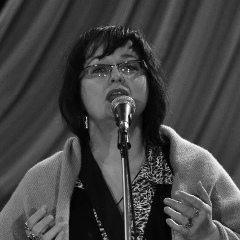Весной 1942 года множество ленинградцев носило на груди жетон ЛАСТОЧКУ с письмом в клюве.
Маленький жестяной значок, а на нем – ласточка с письмом в клюве. Весной 1942 года его начали носить на одежде многие жители Ленинграда – этот символ стал коротким и ясным ответом на заявления немецкой пропаганды о том, что теперь в город даже птица не пролетит.
Люди ждали благих вестей с фронта, они никогда не теряли связи с огромной страной, несмотря на то, что они были полностью отрезаны от нее.
Позже ласточки стали и живыми символами надежды блокадного города.
Сквозь года, и радость, и невзгоды
вечно будет мне сиять одна -
та весна сорок второго года,
в осажденном городе весна.
Маленькую ласточку из жести
я носила на груди сама.
Это было знаком доброй вести,
это означало: "Жду письма".
Этот знак придумала блокада.
Знали мы, что только самолет,
только птица к нам, до Ленинграда,
с милой-милой родины дойдет.
...Сколько писем с той поры мне было.
Отчего же кажется самой,
что доныне я не получила
самое желанное письмо?!
Чтобы к жизни, вставшей за словами,
к правде, влитой в каждую строку,
совестью припасть бы, как устами
в раскаленный полдень - к роднику.
Кто не написал его? Не выслал?
Счастье ли? Победа ли? Беда?
Или друг, который не отыскан
и не узнан мною навсегда?
Или где-нибудь доныне бродит
то письмо, желанное, как свет?
Ищет адрес мой и не находит
и, томясь, тоскует: где ж ответ?
Или близок день, и непременно
в час большой душевной тишины
я приму неслыханной, нетленной
весть, идущую еще с войны...
О, найди меня, гори со мною,
ты, давно обещанная мне
всем, что было, - даже той смешною
ласточкой, в осаде, на войне...
Ольга Берггольц. 1945
Маленький жестяной значок, а на нем – ласточка с письмом в клюве. Весной 1942 года его начали носить на одежде многие жители Ленинграда – этот символ стал коротким и ясным ответом на заявления немецкой пропаганды о том, что теперь в город даже птица не пролетит.
Люди ждали благих вестей с фронта, они никогда не теряли связи с огромной страной, несмотря на то, что они были полностью отрезаны от нее.
Позже ласточки стали и живыми символами надежды блокадного города.
Сквозь года, и радость, и невзгоды
вечно будет мне сиять одна -
та весна сорок второго года,
в осажденном городе весна.
Маленькую ласточку из жести
я носила на груди сама.
Это было знаком доброй вести,
это означало: "Жду письма".
Этот знак придумала блокада.
Знали мы, что только самолет,
только птица к нам, до Ленинграда,
с милой-милой родины дойдет.
...Сколько писем с той поры мне было.
Отчего же кажется самой,
что доныне я не получила
самое желанное письмо?!
Чтобы к жизни, вставшей за словами,
к правде, влитой в каждую строку,
совестью припасть бы, как устами
в раскаленный полдень - к роднику.
Кто не написал его? Не выслал?
Счастье ли? Победа ли? Беда?
Или друг, который не отыскан
и не узнан мною навсегда?
Или где-нибудь доныне бродит
то письмо, желанное, как свет?
Ищет адрес мой и не находит
и, томясь, тоскует: где ж ответ?
Или близок день, и непременно
в час большой душевной тишины
я приму неслыханной, нетленной
весть, идущую еще с войны...
О, найди меня, гори со мною,
ты, давно обещанная мне
всем, что было, - даже той смешною
ласточкой, в осаде, на войне...
Ольга Берггольц. 1945
In the spring of 1942, many Leningraders wore the SWALLOW token with a letter in its beak on their chests.
A small tin badge with a swallow on it with a letter in its beak. In the spring of 1942, many residents of Leningrad began to wear it on their clothes - this symbol was a short and clear answer to the statements of German propaganda that now even a bird would not fly into the city.
People expected good news from the front, they never lost touch with the huge country, despite the fact that they were completely cut off from it.
Later, the swallows became living symbols of hope for the besieged city.
Through the years, and joy, and adversity
forever alone will shine for me -
that spring of forty-two,
spring in the besieged city.
A little swallow of tin
I wore it on my chest myself.
It was a sign of good news
it meant: "I am waiting for the letter."
This sign was invented by the blockade.
We knew that only a plane
only a bird to us, to Leningrad,
from a sweet, sweet homeland.
... How many letters have I had since then.
Why does it seem to be the most
that until now I have not received
the most desirable letter ?!
To the life that stood behind the words
to the truth poured into every line,
the conscience would fall like a mouth
on a hot afternoon - to the spring.
Who didn't write it? Didn't send it?
Is it happiness? Is it a victory? The trouble?
Or a friend who is not found
and is not recognized by me forever?
Or somewhere to this day wanders
that letter, coveted like light?
Looks for my address and does not find
and, languishing, yearning: where is the answer?
Or the day is near, and certainly
in an hour of great peace of mind
I will accept unheard of, imperishable
news from the war ...
Oh find me, burn with me
you promised me long ago
everything that happened - even that funny
swallow, under siege, in war ...
Olga Berggolts. 1945
A small tin badge with a swallow on it with a letter in its beak. In the spring of 1942, many residents of Leningrad began to wear it on their clothes - this symbol was a short and clear answer to the statements of German propaganda that now even a bird would not fly into the city.
People expected good news from the front, they never lost touch with the huge country, despite the fact that they were completely cut off from it.
Later, the swallows became living symbols of hope for the besieged city.
Through the years, and joy, and adversity
forever alone will shine for me -
that spring of forty-two,
spring in the besieged city.
A little swallow of tin
I wore it on my chest myself.
It was a sign of good news
it meant: "I am waiting for the letter."
This sign was invented by the blockade.
We knew that only a plane
only a bird to us, to Leningrad,
from a sweet, sweet homeland.
... How many letters have I had since then.
Why does it seem to be the most
that until now I have not received
the most desirable letter ?!
To the life that stood behind the words
to the truth poured into every line,
the conscience would fall like a mouth
on a hot afternoon - to the spring.
Who didn't write it? Didn't send it?
Is it happiness? Is it a victory? The trouble?
Or a friend who is not found
and is not recognized by me forever?
Or somewhere to this day wanders
that letter, coveted like light?
Looks for my address and does not find
and, languishing, yearning: where is the answer?
Or the day is near, and certainly
in an hour of great peace of mind
I will accept unheard of, imperishable
news from the war ...
Oh find me, burn with me
you promised me long ago
everything that happened - even that funny
swallow, under siege, in war ...
Olga Berggolts. 1945

У записи 3 лайков,
0 репостов.
0 репостов.
Эту запись оставил(а) на своей стене Дарья Ричевуто
























